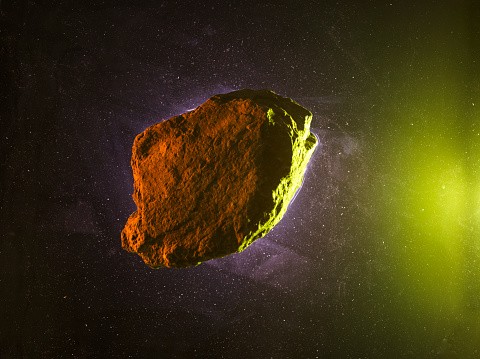Many hidden asteroids got detected thanks to a study conducted by researchers that used old telescope data that saw these space rocks floating around the vast space. These asteroids would be potentially dangerous when coming across on future space missions, or as it has the potential of drawing themselves close to the planet and would come without any warning for all.
A flyby of a potentially hazardous asteroid the size of a "blue whale" is also coming by Monday, June 6.
Hidden Asteroids Detected: Researchers Use Old Telescope Data

(Photo : Getty Images)
The B612 Foundation brought a new algorithm for detecting space objects using old telescope data. The researchers saw many hidden asteroids that were previously undetected by the watchdogs of the skies. The new algorithm is known as "Tracklet-less Heliocentric Orbit Recovery (THOR)," and it brings a clearer view of space for all needs.
According to the foundation's statement, there are more than 100 space rocks that the new algorithm detected in space, and it is something that was hidden before. Potentially, it may bring dangers to all humans as it could go by undetected, even in space flights that venture towards deep space with different rockets and spacecraft.
Asteroid 2021 GT2 Flyby Coming this Monday
In related reports, News.com AU reported a massive asteroid that will be flying by the Earth this Monday, June 6, and it is as huge as a "blue whale," with its size ranging from 36 to 82 meters wide. Asteroid 2021 GT2 is coming close to the planet, considered a potentially hazardous asteroid that comes at a broad but close gap of 3.5 million kilometers.
Potentially Hazardous Asteroids
Potentially hazardous asteroids are not rare in the massive celestial heavens now, as many objects are floating around in space from different locations and origins, with varying sizes and danger levels. One of the focuses of NASA now is to keep its telescopes fixed on a particular object like asteroids, one that it is testing with the James Webb.
There was once a mission that NASA and SpaceX made to change the trajectory and impact level of an asteroid heading towards the planet for a potentially devastating hit to the earth. The venture is known to be the Kinetic Impactor mission, which fires a rocket that would hit the asteroid, change its trajectory, and take it off course.
Other ventures of NASA focus on doing many things against the potentially hazardous asteroids, and ensuring that the planet is safe from these types of harm.
Potentially hazardous and hidden asteroids will never go out of the equation regarding the planet's inclusion in the Solar System and the galaxy, as there are many things out there that we cannot control. However, the main focus that the planet has to do now is to detect and prepare for it, with different actions in place by the concerned entities.
Related Article: Why Amateur Asteroid Hunters are Important in Planetary Defense; Here's How They Help NASA, Other Space Agencies
This article is owned by TechTimes
Written by Isaiah Richard





